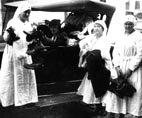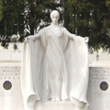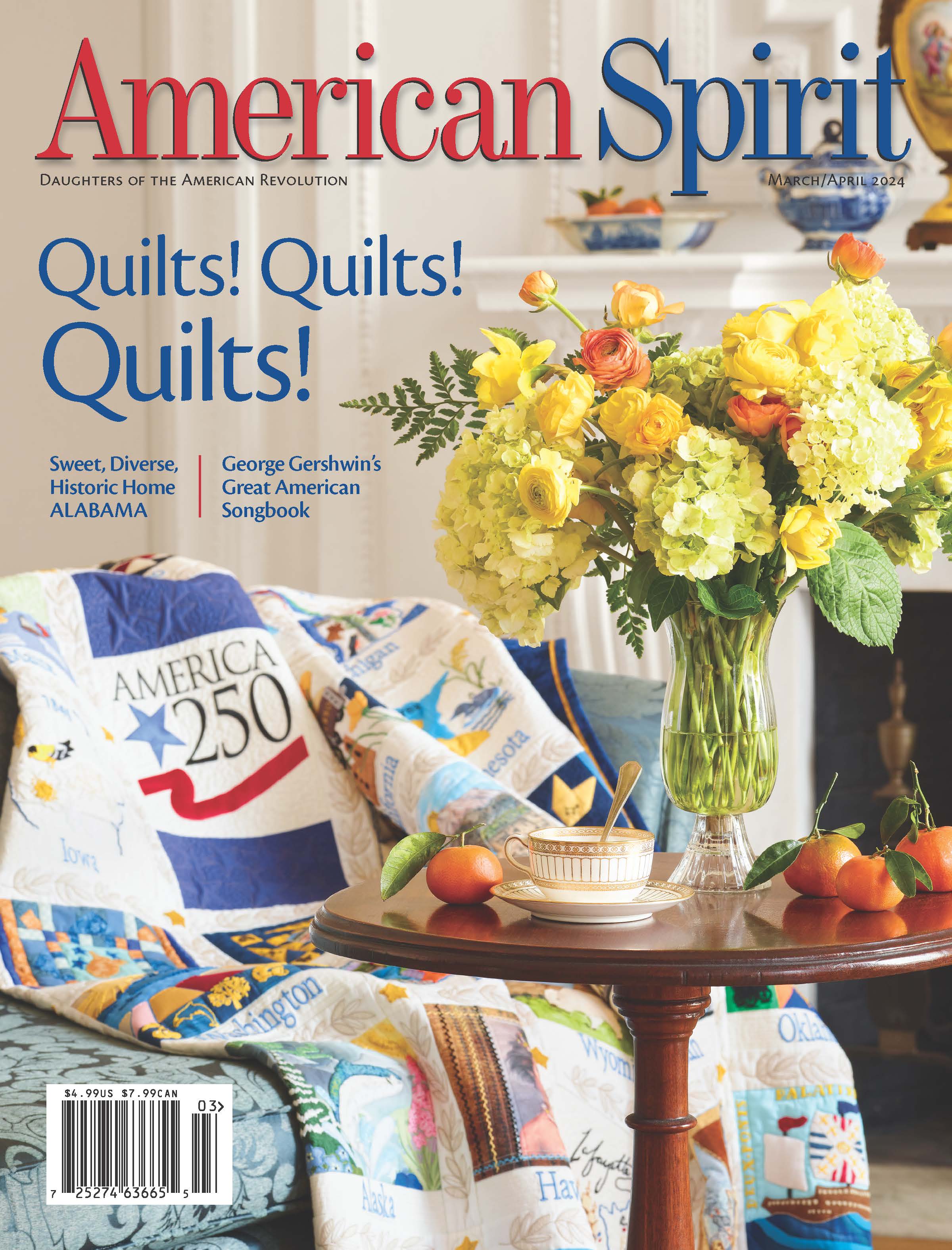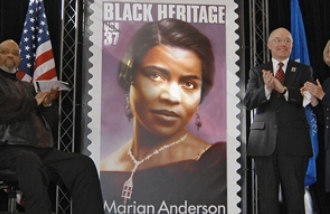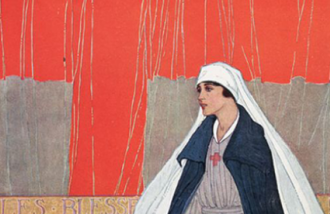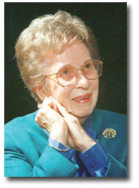
Volume 142, Number 6, November/December 2008, Page 4
By Lena Anthony
Some text contributed by Evelyn Parker Clark and Elizabeth Thigpen.
Photos courtesy of Evelyn Clarke, Katharine Singer, Doris Alberts and Florriedeen Lyle
Among the 6 million women who entered the workforce during World War II was Evelyn Parker Clark. Shortly after graduation from college in 1944, she and three of her friends arrived at their new home—a dormitory within the closed walls of Oak Ridge, Tenn., a base for the Manhattan Project. Assigned to the Y-12 National Security Complex, Mrs. Clark served as an inspector, working directly with the uranium that would eventually be used to make the atomic bombs that were dropped on Hiroshima and Nagasaki. Of course, she didn’t know that at the time.
“Ninety-nine percent of the people working in Oak Ridge did not know the purpose of our work, but we knew it was important and that there was a war to be won,” says Mrs. Clark, who is a member of the General William Lee Davidson Chapter, Nashville, Tenn.
For many of the American women who either entered the workforce during WWII or switched jobs to support the war efforts, their reasons were much the same—they knew their wartime contributions, no matter how large or small, would help the United States prevail.
Evelyn Parker Clark: Oak Ridge Inspector
As Inspector A, Mrs. Clark’s duty was to place a charged bottle of uranium hexafluoride into a magnetic field to separate the U-235 from the U-238, the former of which was needed to power an atomic bomb. It took about 36 hours to complete the process. The necessary material was then weighed and sent on its way—where she did not know. “We later learned that it was sent to Los Alamos, N.M., in a briefcase locked to a courier’s wrist,” she says.
When Mrs. Clark’s shift ended, she was required to remove her clothing and shower. “I wore a white turban, white shirt, long white pants, safety shoes, gloves and safety goggles,” she recalls. She underwent regular tests to check for side effects. “No one really knew the danger of being exposed to radiation at that time,” says Mrs. Clark, a two-time cancer survivor who received compensation from the federal government for exposure to radiation and her subsequent cancers.
Mrs. Clark met her husband, Glynn, while living in Oak Ridge. After the war, they moved so Mr. Clark could pursue a graduate degree and start his career at an oil company. The Clarks had two daughters and moved around the country before retiring to Tennessee.
Katharine Phillips Singer: Community Volunteer
If you’ve seen “The War,” the documentary by Ken Burns, then you probably are already familiar with Katharine Phillips Singer, who was featured in the film talking about life during WWII in her hometown of Mobile, Ala.
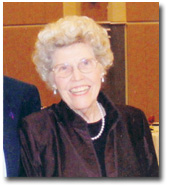 Mrs. Singer was a student at Auburn University when war broke out. After graduation, she returned home and did her part to support the country—and her younger brother, Sidney, who enlisted in the Marines in 1941. She worked at a church day care facility, caring for children whose mothers were working in Mobile’s shipyards. She also volunteered for the Red Cross.
Mrs. Singer was a student at Auburn University when war broke out. After graduation, she returned home and did her part to support the country—and her younger brother, Sidney, who enlisted in the Marines in 1941. She worked at a church day care facility, caring for children whose mothers were working in Mobile’s shipyards. She also volunteered for the Red Cross.
After the war, Mrs. Singer worked as an airline stewardess with Waterman Steamship Company Airlines. While working there, she met her late husband, Harvey Singer, a pilot for the airline who had also been a Navy pilot during the war. In 1946, Mrs. Singer flew on Waterman missions to Europe to bring home volunteers working with the United Nations Relief and Rehabilitation Administration, which provided assistance to Europeans displaced by the war.
“I wish every American could have seen the destruction that I saw in Europe,” she says. “This is the reason our veterans have always been my heroes. They went over there and protected us from that devastation. I came home a much better American because of it.”
She joined the DAR in the 1960s as a member of the Needham Bryan Chapter, Mobile, Ala. These days, you’ll find Mrs. Singer managing The Two Antiques, an antique linen store she owns with Sidney.
Doris Alberts: Nurse to the Wounded
The Cadet Nurse Corps was formed in 1944, and Doris Alberts wasted no time joining. But, Ms. Alberts recalls, her father refused to pay for the training because he disapproved of the way he saw nurses behave when he served during World War I. Determined to contribute to the war effort, she paid for the three-year training herself.
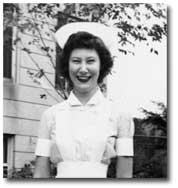 In 1945, Ms. Alberts was sent to O’Reilly General Army Hospital in Springfield, Mo. “I was assigned to the paraplegic ward,” she says. “Here were boys, some just 18 years old. I was so impressed by the way they handled their situations. They made me realize that each person could have something happen to them that could destroy their lives—but only if they let it.”
In 1945, Ms. Alberts was sent to O’Reilly General Army Hospital in Springfield, Mo. “I was assigned to the paraplegic ward,” she says. “Here were boys, some just 18 years old. I was so impressed by the way they handled their situations. They made me realize that each person could have something happen to them that could destroy their lives—but only if they let it.”
Ms. Alberts also recalls a soldier who arrived at the hospital with terrible burns after being shot down in his B-17. “He wouldn’t let his wife come to see him,” she says. “He asked me what I thought. I was 20 years old; what did I know? So I asked him if he had thought about how his wife must feel. Two days later, I found out that he finally let his wife visit. That’s something I’ll never forget about my time there.”
After the war, Ms. Alberts returned to school and eventually received a doctorate degree in English literature. But medicine called her back. She trained as a nurse anesthetist at Washington University in St. Louis and worked there until her retirement in 1995. Today, Ms. Alberts stays busy with the Belleville Chapter, Belleville, Ill. She helps with the ongoing project of indexing her chapter’s yearbooks, which are available for genealogical research at the public library. “There’s a lot of rich, historical material in them, and our goal is to make that material useful,” she says.
Florriedeen Wakenight Lyle: Teacher to the Imprisoned
Florriedeen Wakenight Lyle had been teaching for six years as a public school teacher in Searcy, Ark., when she saw the job posting: Teachers were needed at the Japanese-American Relocation Center located in Jerome, Ark., about three hours from her hometown. She jumped at the opportunity.
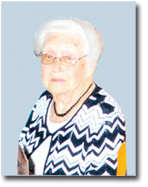 “My students were from Hawaii, and they were the most patriotic children I had ever met,” she recalls. “They knew all about the Army, Navy and Marines, and they knew all the typical patriotic songs and wanted to sing them.”
“My students were from Hawaii, and they were the most patriotic children I had ever met,” she recalls. “They knew all about the Army, Navy and Marines, and they knew all the typical patriotic songs and wanted to sing them.”
After three years, Mrs. Lyle, with her late husband, Thomas, moved to Phoenix, Ariz., for a public relations job at the Gila River War Relocation Center, another internment camp for Japanese-Americans.
After the war, the couple settled in Benton, Ark., and had a daughter, Linnie. Today, Linnie lives with Mrs. Lyle in Benton and they’re both members of the Provincia De La Sal Chapter.
This July, Mrs. Lyle thought her daughter was taking her to lunch, but when they arrived at the restaurant, the entire chapter was there for her surprise 95th birthday party. “I was so surprised I didn’t know what to do,” she says. “The DAR has been so wonderful to me.”
Every Veterans Day the chapter hosts a memorial service at the Benton courthouse, and each year at 11 a.m., Mrs. Lyle rings an old school bell—the same bell she rang at the same time on November 11, 1918, when word reached Arkansas that WWI had ended.


